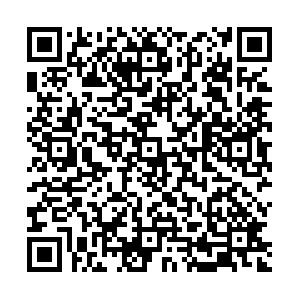Throughput optimization for cellular communication on tethered unmanned aerial vehicle base station
-
摘要:
考虑多架系留无人机(UAV)空中基站为多小区提供空地双向通信服务时,针对地面用户数目分布不均匀和多机协同服务同频干扰严重的问题,提出了一种联合优化空中基站高度和链路传输方向的吞吐量优化算法。该方法通过使用最大同频链路准则和就近服务准则确定了同频链路配对和无人机/用户配对,通过优化空中基站高度和链路传输方向提升了系统平均吞吐量,并减少了用户间的同频干扰。多种场景下验证结果均显示,所提方法显著优于其他非联合优化的对比方法,当拥塞小区用户数目是非拥塞小区用户数目的1~36倍时,相比于不联合优化链路传输方向和空中基站高度的对比方法,所提方法可提升系统平均吞吐量8倍左右。
-
关键词:
- 空中基站 /
- 系留无人机(UAV) /
- 空地双向通信 /
- 优化方法 /
- 链路传输方向
Abstract:Considering the problems of uneven distribution of the number of ground users and serious co-channel interference of multi Unmanned Aerial Vehicle (UAV) cooperative services when multiple tethered UAV aerial base stations are used to provide air-ground two-way communication services to multiple communities, this paper proposes a throughput optimization method with both aerial base station height and link transmission direction optimized. This method determines the co-frequency link pairing and drone/user pairing by using the maximum co-frequency link criterion and the nearest service criterion. By optimizing the drone height and link transmission direction, the average throughput of the system is improved and the co-frequency interference between users is reduced. The verification results in various scenarios show that the proposed method is significantly better than non-joint-optimization comparative methods that do not jointly optimize the link transmission direction and the height of aerial base station. When the number of users in a congested community is 1-36 times the number of users in a non-congested community, compared with the comparative methods, the proposed method can improve the average throughput of the system by about 8 times.
-
表 1 多机场景吞吐量优化方法验证的参数设置
Table 1. Parameter setting for throughput optimization method verification in multi-UAV scenarios
表 2 不同方法的吞吐量比较
Table 2. Throughput comparison of different methods
拥塞小区用户数 本文方法 对比方法 吐吞量提升/倍 1 49.5 6 8.25 6 21.9 2.7 8.1 11 16.15 1.8 9.0 16 12.15 1.4 8.7 21 9.8 1.1 8.9 26 8.5 0.9 9.4 31 7.6 0.9 8.4 36 7.1 0.8 8.9 -
[1] MOZAFFARI M, SAAD W, BENNIS M, et al. A tutorial on UAVs for wireless networks: Applications, challenges, and open problems[J]. IEEE Communications Surveys and Tutorials, 2019, 21(3): 2334-2360. doi: 10.1109/COMST.2019.2902862 [2] ZENG Y, ZHANG R, LIM T J. Wireless communications with unmanned aerial vehicles: Opportunities and challenges[J]. IEEE Communications Magazine, 2016, 54(5): 36-42. doi: 10.1109/MCOM.2016.7470933 [3] SELECKY M, FAIGL J, ROLLO M. Communication architecture in mixed-reality simulations of unmanned systems[J]. Sensors, 2018, 18(3): 853. doi: 10.3390/s18030853 [4] HAYAT S, YANMAZ E, MUZAFFAR R. Survey on unmanned aerial vehicle networks for civil applications: A communications viewpoint[J]. IEEE Communications Surveys and Tutorials, 2016, 18(4): 2624-2661. doi: 10.1109/COMST.2016.2560343 [5] KHAMSEH H B, JANABI-SHARIFI F, ABDESSAMEUD A. Aerial manipulation-A literature survey[J]. Robotics and Autonomous Systems, 2018, 107: 221-235. doi: 10.1016/j.robot.2018.06.012 [6] PRIEST L, TERRY C, ERICKSON R. Tethered unmanned aerial vehicle-based systems and methods associated with cell sites and cell towers: USA, 9669945[P]. 2017-06-06. [7] SUDHSEEH P G, MOZAFARRI M, MAGARINI M, et al. Sum-rate analysis for high altitude platform (HAP) drones with tethered balloon relay[J]. IEEE Communications Letters, 2018, 22(6): 1240-1243. doi: 10.1109/LCOMM.2017.2785847 [8] BUSHNAQ O M, KISHK M A, CELIK A, et al. Cellular traffic offloading through tethered-UAV deployment and user association[EB/OL]. (2020-03-02)[2020-03-28]. https://arxiv.org/abs/2003.00713v1. [9] KISHK M A, BADER A, ALOUINI M S. Capacity and coverage enhancement using long-endurance tethered airborne base stations[EB/OL]. (2019-06-27)[2020-03-28]. https://arxiv.org/pdf/1906.11559.pdf. [10] 李威, 李跃军. 利用无人机搭建高空基站的研究[J]. 通讯世界, 2017, 9: 12-13. https://www.cnki.com.cn/Article/CJFDTOTAL-TXSJ201709007.htmLI W, LI Y J. The research on building high-altitude communication base station by using UAV[J]. Telecom World, 2017, 9: 12-13(in Chinese). https://www.cnki.com.cn/Article/CJFDTOTAL-TXSJ201709007.htm [11] 吴侹. 系留多旋翼无人机通信系统在应急救灾通信中的应用[J]. 移动通信, 2016, 40(15): 68-71. doi: 10.3969/j.issn.1006-1010.2016.15.013WU T. The application of captive multi-rotor UAV telecommunication system in emergency rescue communication[J]. Mobile Communication, 2016, 40(15): 68-71(in Chinese). doi: 10.3969/j.issn.1006-1010.2016.15.013 [12] 徐秀杰, 贾荣光, 杨玉永, 等. 系留式无人机中继通信系统在地震应急现场的应用试验研究[J]. 震灾防御技术, 2018, 13(3): 718-726. https://www.cnki.com.cn/Article/CJFDTOTAL-ZZFY201803023.htmXU X J, JIA R G, YANG Y Y, et al. Technical application of the tethered UAV relay system in earthquake emergency site[J]. Technology for Earthguake Disater Prevention, 2018, 13(3): 718-726(in Chinese). https://www.cnki.com.cn/Article/CJFDTOTAL-ZZFY201803023.htm [13] HUANG W, KIM D M, DING W, et al. Joint configuration of transmission direction and altitude in uav-based two-way communication[EB/OL]. [2020-03-28]. https://arxiv.org/pdf/1805.08635.pdf, 2018. [14] HUANG W, KIM D M, DING W, et al. Joint optimization of altitude and transmission direction in UAV-based two-way communication[J]. IEEE Wireless Communications Letters, 2019, 8(4): 984-987. doi: 10.1109/LWC.2019.2903041 [15] AL-HOURANI A, KANDEEPAN S, JAMALIPOUR A. Modeling air-to-ground path loss for low altitude platforms in urban environments[C]//Proceedings of IEEE Global Communications Conference. Piscataway: IEEE Press, 2014: 2898-2904. [16] MOZAFARRI M, SAAD W, BENNIS M, et al. Efficient deployment of multiple unmanned aerial vehicles for optimal wireless coverage[J]. IEEE Communications Letters, 2016, 20(8): 1647-1650. doi: 10.1109/LCOMM.2016.2578312 [17] POPOVSKI P, SIMEONE O, NIELSEN J J, et al. Interference spins: Scheduling of multiple interfering two-way wireless links[J]. IEEE Communications Letters, 2015, 19(3): 387-390. doi: 10.1109/LCOMM.2014.2387166 [18] HE H, ZHANG S, ZENG Y, et al. Joint altitude and beamwidth optimization for UAV-enabled multiuser communications[J]. IEEE Communications Letters, 2018, 22(2): 344-347. doi: 10.1109/LCOMM.2017.2772254 -







 下载:
下载:












